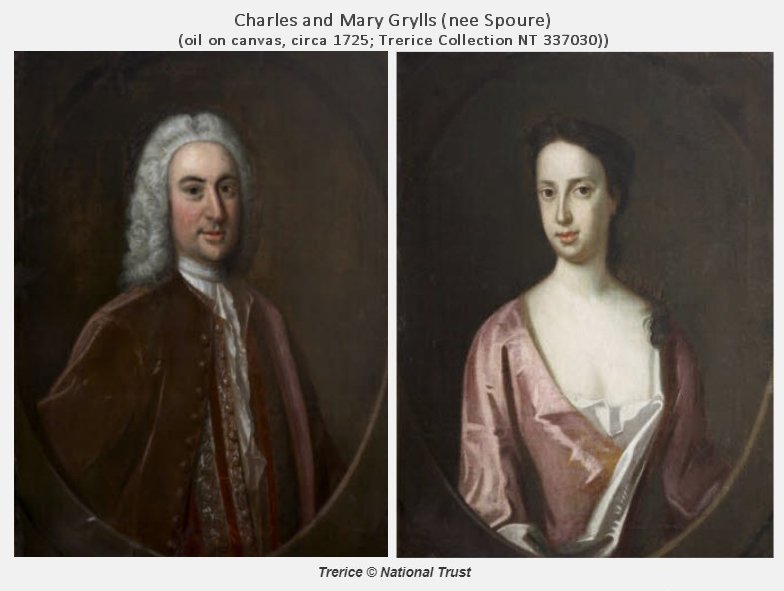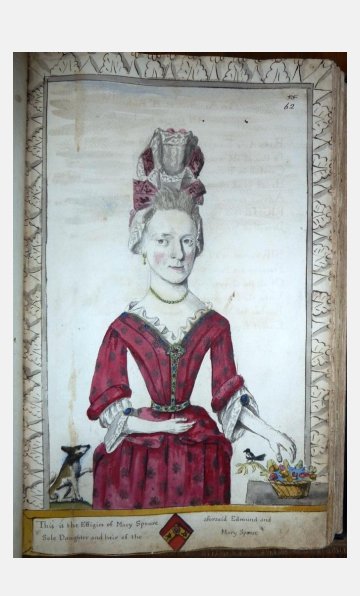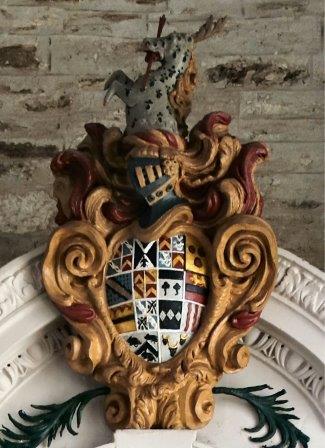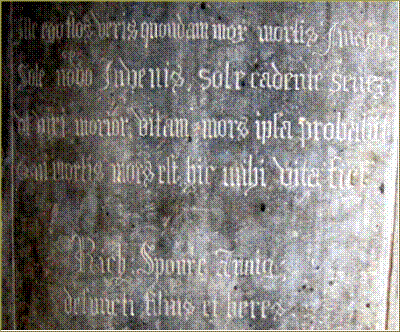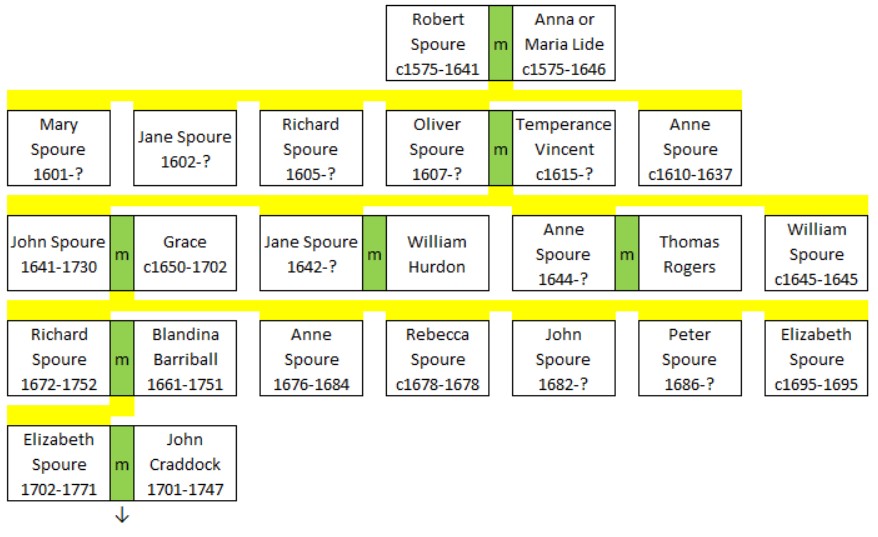
SPOURE |
| |||||||||||||||||||||||||||
Arrival |
Edmund Spoure |
Mary Spoure |
Memorials |
Family Conflict or Class Division? |
Book of Spoure |
William Rowe |
1620 Visitation of Cornwall |
The Spoure family lived at Trebartha Hall from 1498 to 1729. Before that the seat was occupied by the Trebartha family. Today there remain two significant works by Edmund Spoure that help us understand the family's heritage. He constructed the splendid memorial to his son, Henry, that is in the church of St Torney's in North Hill, and he wrote "The Book of Spoure". The Spoure legacy was to pass on a viable estate that the Rodd family owned and worked for a further 240 years. |
The Arrival of the Spoure Family and Growth of the Trebartha EstateIn the Book of Spoure by Edmund Spoure (1694) he says "The Spoures were also an ancient Famely, in the County of Summerset, nigh Crookarn [Crewkerne], and had Misterton their Mansion house from Edward Courtney Erle of Devonshire, in the first year of Henry The fourth [1399/1400]; and now nigh Bristoll, and in Shopsheir, are some younger branches of the Famely even to this day; but I finde anciently by old records, they were a Nottinghams Sheir Famely, and flourished for many descents in that County; but at what place in the County, I cannot finde, so darke, and obscure has ancient times left their Memorialls to us." Edmund's information regarding the Bristol connection appears correct. In The National Archive is the will of Morris Spoore of Easton in Gordano, near Bristol, dated 19 April 1588. Nicholas Trebartha, the last male heir of that family, died in the reign of Henry VII (1485-1509) leaving his daughter Anne as sole heiress. She married in 1498 to Thomas Spoure of Misterton in Somerset. He was captain of a troop of horse and had been sent to Cornwall to suppress an uprising against the Crown, and there met and married Anne. Thomas and Anne's son, also named Thomas, married Katherine Reskimer. He purchased from Sir George Carew the adjacent manor of Treveniel in North Hill as well as lands in Blisland. This Thomas' son, yet another Thomas, married Jane, daughter of John Jackman of Stoke Climsland. The Book of Spoure relates how their son, Henry Spoure esquire, married Mary Roose of Froxton, near Holsworthy, in the parish of Whitstone in the 11th year of the reign of Queen Elizabeth I (1569). Because Mary was their sole heir to her father's estate, Froxton then became part of the Spoure estates. Henry purchased additional lands in North Hill, notably Trewortha and Lemarne, and subsequently sold Misterton, the original seat of the Spoures. Lemarne is of particular interest because of the tin mine which provided so well that Henry was able to give 1000 pounds a piece to his five daughters. Apparently this was the first time that such a large sum of money had been given to a daughter by a private gentleman from his class in Cornwall. Henry built the great parlour and other rooms and buildings as additions to the existing Trebartha Hall. The Spoures gradually purchased more land to add to their estates, including the neighbouring manor of Tolcarne (purchased from John Kekewich of Catchfrench), Coquernell and Trekernell in North Hill. They acquired by marriage with the family of Speccott various properties in Devon and in Launcells. |
|||||||||
Edmund Spoure (1654-1696)
In 1675 Edmund married Mary Rodd, the daughter of James Rodd of Oakhay, Stoke Cannon, Devon, and his wife Mary, nee Bampfylde. Edmund's sketch of Oakhay is shown here and has been taken from The Book of Spoure; click on the image for a larger image. Edmund and Mary had two children, a son and a daughter:
Edmund, probably being aware of his own impending death but certain that this branch of the Spoure line was to end with him, commenced two projects to help ensure the Spoure name lived on. Following Henry's death, Edmund commissioned the splendid Spoure Memorial shown above. This was as much a testament to the family as it was to Henry. Indeed, we learn from a document dated 1723, when the then master of Trebartha, Charles Grylls, petitioned to modify the pews in the Spoure Chapel, that this area of the church had been the traditional burying place for members of the Spoure family. Erecting a large memorial on the site would have gone some way to ensuring the family's interred remains would be undisturbed. In 1694 he wrote the magnificent "The Book of Spoure" for his daughter, Mary. Edmund died in 1696 when he was just 42. |
|||||||||
Mary Spoure's two marriages to Renatus Bellott and Charles GryllsIn 1697 Mary Spoure married Renatus Bellott of Bochym in Cury on the Lizard peninsular in Cornwall. The Bellott family had come to Cornwall during the reign of Elizabeth. Renatus was Member of Parliament for Mitchell in Cornwall in 1702. In 1704 he and Mary had a son, Renatus, but the child died in 1712, and was buried in North Hill churchyard. His father died a few years later, the last of his family. Bochym was sold, but some lands were acquired by Mary, in St. Neot and St. Cleer. Around 1720 Mary married for a second time; her husband was Charles Grylls of Court in Lanreath, shown below. This would appear to be their portraits commemorating their wedding.
Their only son George died in infancy, and Charles died in 1728. Once again Mary was a widow without an heir. All Charles' lands, presumably including Trebartha Hall and the attached estate which came to his possession when he married Mary, were left in trust for Mary for her life and after her death to revert to trustees to the use of his kinsman William Grylls of Chaddlehanger near Lamerton in Devon. This appears not to have happened as Mary wrote her own will in 1728 and no bequests were made into the Grylls family. Had she not written a will it is likely that Trebartha and its lands would have fallen into the hands of either this William Grylls or Richard Grylls, the vicar of Lanreath. If the estates had been protected from the Grylls and Mary died intestate the natural beneficiaries would have been the Bond family of Quethiock. Mary, however, was determined to secure a future of her choosing the Spoure estate. There were very few close relations on her father's side of the family. Her mother, Mary Spoure nee Rodd, lived with Mary until her death 1724. The Rodd family were blessed with a larger number of family members and they lent their support to Mary and her mother. Following Charles Gryll's death, therefore, Mary, the last surviving Spoure of Trebartha became engaged to her mother's nephew and her own cousin Francis Rodd, son of Bampfylde Rodd of Devon. In 1728 she made a will leaving him all her property "provided he is not already married to, or shall not at any time take to wife, Jane Parker, now living in Covent Garden, London". Whilst this was to have been an expedient marriage because it ensured that the estate would remain in the family of Mary's mother, it seems that Mary had a real affection for her cousin. Before the wedding could take place Mary died of smallpox, and in 1730 Francis Rodd found himself the owner of considerable estates in Cornwall. From hereon the Rodd family occupied Trebartha Hall. read more ... Mary was buried at St Torney's on 6th May 1729. |
|||||||||
|
|||||||||
The Spoure Memorials in St Torney's Church |
||
There are five memorials in the church displaying Spoure heraldry. On the church plan they are numbered 17, 18, 19, 21 and 23. The most significant is #19 - The Monument to Henry Spoure (1677-1688). |
||
#17 - The three arched memorial to the infant Richard Spoure who died in 1653 |
||||
| Infans quid loquitae [Spoken by the child]This carved tombe |
||||
|
In the Spoure Chapel in St Torney's Church in North Hill there are four square plaques showing various arms related to the Spoure family. The latest of these dates from around the mid 1650s when Edmund was born. It is possible that there were more plaques but some have been lost. The one which refers back furthest references a marriage around 1500. |
||||
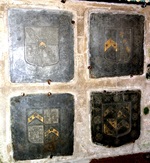 |
1 |
2 |
3 |
4 |
| The four plaques 1 and 3 2 and 4 |
The Trebartha arms are quartered with the Calloway (Kellaway) arms. The Spoure arms are in the escutcheon. | The Spoure arms are quartered with the arms of Roose. | The Spoure arms are impaled with the arms of Bury (Berry). | The Spoure arms are quartered with the Speccott arms. |
Dating the plaques. The style of the plaques would seem to indicate that they were created at the same time, probably by Edmund or his father, Henry. This would have been in the mid to late 1600s. It is interesting to note that the fourth plaque's base has been shaped, perhaps indicating that this was added after the others. In support of this theory is that the third plaque shows the Spoure arms, of Henry Spoure, being impaled by the Bury arms of Gertrude Bury. This would suggest that Henry and Gertrude were alive when the plaque was created. Gertrude died in 1657 and Henry died in 1670 and so it may have been that Henry commissioned the plaques and later his grandson, Edmund, added the final plaque after his own father's death in 1666 in order to complete the story of the Spoure family. |
||||
|
Notes |
1. (c1475 - Trebartha and Kellaway) Around 1475 Nicholas Trebartha married Catherine Kelloway and they had a daughter Anne. If they had other children then they would have died as Edmund describes Anne as being the daughter and sole heir of Nicholas and Catherine. Both the Trebartha and the Kelloway families were armigerous and the arms on the plaque are Anne's as they show both her parents; she was the heraldic heiress. The escutcheon of pretence placed in the centre of her arms references her husband, Captain Thomas Spoure, whom she married around 1498. The heraldic convention is that if the wife be an heraldic heir or coheir, in lieu of impalement, the arms of her family are placed on an inescutcheon superimposed on the centre of her husband's arms, the inescutcheon being termed an escutcheon of pretence, because jure uxoris she being an heiress of her house, the husband "pretends" to the representation of her family. These arms, however, show the husband's arms in pretence. This is either unusual or, more likely, incorrect as a woman of this time was not legally capable of owning property and upon her marriage would not be responsible for her husband's estate. Thomas Spoure and Anne Trebartha had a son Thomas who married Katherine Reskimer. Thomas and Katherine had a son Thomas who married Jane Jackman. Thomas and Jane's son, Henry, married Mary Roose. These marriages are not represented in the array of plaques and prompts the suggestion that there may be lost plaques. 2. (c1570 - Spoure and Roose) The Spoure arms are quartered with the arms of Roose of Whitstone. These would have been the arms of Richard the son and heir of Henry and Mary Spoure, mentioned above. Richard married Mary Courtenay and they had a son, Henry Spoure who was born about 1600. 3. (1622 - Spoure and Bury) Richard and Mary's son, Henry, married in 1622 to Gertrude Bury whose family hailed from Colleton Barton in the parish of Chulmleigh in Devon. Henry's arms are impaled by the Bury arms. See the note above on dating the plaques. Henry and Gertrude had a son, Henry, who married Mary Speccott.
4. (1654-1675 - Spoure and Speccott) The quartered arms of Spoure and Speccott are those of Edmund Spoure himself, before his marriage to Mary Rodd in 1675. |
|||
#19 - The Spoure Memorial in the Spoure Chapel in St Torney's Church, North Hill. This is the monument to Henry Spoure (1678-1688), the son of Edmund Spoure and Elizabeth (nee Speccott). Edmund and Elizabeth are kneeling in prayer. Behind them are their children Henry, to whom the monument is dedicated, and Mary, each of them holding a book in their hand. Mary's book is open but Henry's is closed, signifying his death. |
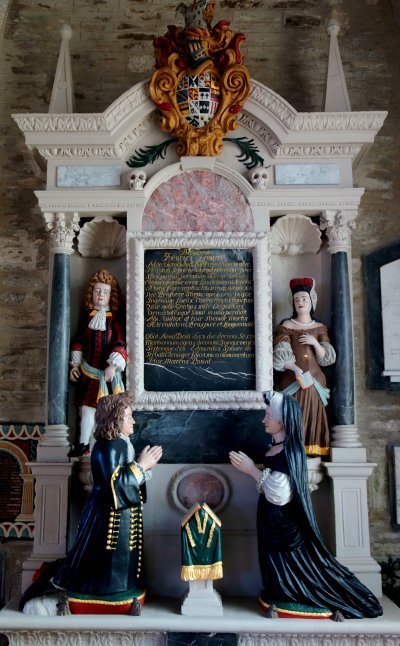
To read more about the heraldry, go to The Book of Spoure
| |
Mary's ancestry is shown here and explains the source of many of the elements of the armorial plaque set at the very top of the monument. The crest's blazon is a 'Demi-Heraldic Antelope Ermine, Erased Per Fess Gules, Crined And Attired Or, Holding In The Mouth A Broken Spear Sable, Headed Argent, The Head Downwards'. The families represented here are shown below. |
||
#21 - this would appear to be an incised floor slab which has been moved to the wall. Mary was born Mary Spoure and was the last of the Spoure line. She married Renatus Bellot around 1703 and their only son, named after his father was born a year or so later. Renatus senior died in 1710 and is buried at Cury. Renatus junior died when just eight years old and is buried in North Hill, probably beneath the nave or in the Spoure chapel. Mary remarried at some point in the 1720s to Charles Grylls but he died in 1728, leaving Mary without a husband or an heir to inherit her estate. |
|
#23 - is an incised tomb slab which has been lifted and now stands as part of the south wall of the Spoure chapel. There is furniture preventing a single full length image. You can view the upper part, the lower part and some detail. The arms shown are those of the Spoure and Trebartha families. The outer edge inscription reads Incised into the middle of the slab between the skull and the coat of arms it says: |
|||||||
|
|||||||
Family Conflict or Class Division? The Book of Spoure is a revealing document and gives us insight into the life and thoughts of Edmund Spoure, Esquire, gentleman and landed proprietor of Trebartha Hall. He was born in 1654 into a family that strongly supported the monarchy and the Church of England. He was aware of life under the Commonwealth and the Restoration of the Monarchy. Like the rest of his family recorded in The Book of Spoure, he was also a devout supporter of the monarchy and the established church. He had been regaled with stories of daring and courage by and about members of the family. He was aware of lives lived and lives lost and of the leaders of those troops all performing their duty before God and the King. Edmund wrote this book and finished it in 1694 in celebration of the Spoure family who manifested these values. Edmund also lived in the small, fairly isolated Cornish community that was North Hill. The relationship the community had with the outside world had changed little over the centuries and, for most local residents of the parish, its people were the essential elements of their lives. Everybody knew everybody else and who lived where, who was in a relationship and who was working for whom. The minutiae of people's lives was the interest of all. Edmund would have been well aware of people living nearby and their relative social standing.. Living in the parish, at the time that Edmund was writing his book (1694), was another family that went by the name of Spoure. No family relationship has been found to connect these two Spoure families into a single family with two branches but it is possible to speculate on this. The earliest known event in North Hill of this 'other' branch of the family was in 1637, the burial of Anne Spoure, recorded as the daughter of Robert Spoure. She was probably in her mid-twenties and unmarried. Anne and her siblings had been born in Ugborough in Devon, which is where her parents had married in 1600. Sometime after 1610, but before 1637, the family moved to North Hill. This was most likely to have been an economically driven move and perhaps at the invitation from the Spoures of Trebartha Hall, who could offer to what may well have been their cadet branch of the family, land to work. |
|
The Book of Spoure has epitaphs written by Edmund Spoure in remembrance of many people. One of these was in homage to his young cousin, William Rowe. It was not unusual at the time to regard close relatives, other than siblings, as "cousin". Where the relationship was a little more distant, or ill-defined, then the term "kinsman" was often used. The epitaph started a course of research that led to it being established that Edmund and William were 'cousins' in the accepted sense we use today, i.e. the children of siblings. Edmund's father had a sister, Jane Spoure, who married in Pillaton in 1661 to Thomas Rowe of Poldrassick, which is in parish of Landrake. One of their sons was William Rowe who was baptized in 1671 in Landrake church as the son of "Thomas Rowe a gentleman". This made Edmund and William cousins as described above. When William was buried at St Mary Magdalene in Launceston on 24th April 1694 he would have been about 23 years old and was described as an apprentice to Mr Langdon. To have been an apprentice in his 20s was unusual and to be an apprentice when coming from a family where the head was "a gentleman" was equally unusual. The poem starts to explain this with the lines "By the small Pox, such was its pestilence, My Art, was for to practice Phisick well". The St Mary Magdalene burial register of 1709 records Michael Langdon, deceased, as a gentleman and that he was buried in the chancel. Earlier Mr Langdon had been described as an apothecary at the time of the baptism of his children. In his own will, written in 1709, Michael Langdon gives his occupation as a "chyrurgeon". This is a term meaning surgeon that has long since gone from the language. William, the apprentice, had been learning the ways of a 17th century doctor under the guidance of Michael Langdon. |
|
|
|
||
|
Such an occupation required the apprentice to have been properly educated and the training would have lasted much longer than an apprenticeship in a trade, explaining why William was an older apprentice and from a family with some social standing. The poem tells us that William Rowe died on 23rd April 1694 from smallpox. The burial record in the register of St Mary Magdalene in Launceston shows that he was buried the following day. This may seem hasty but, as it is likely that William contracted the disease from a patient, then it was expedient to have the body interred as soon as possible before any further community contagion set in. In his will Michael Langdon left his many "Physick" books, his shop and its contents, including all the drugs, to his understudy and son in law, John Knill. Had William Rowe survived, perhaps this could have been his inheritance. |
||
The header image shows the family coat of arms and three members of the Spoure family, taken from the Book of Spoure. |



